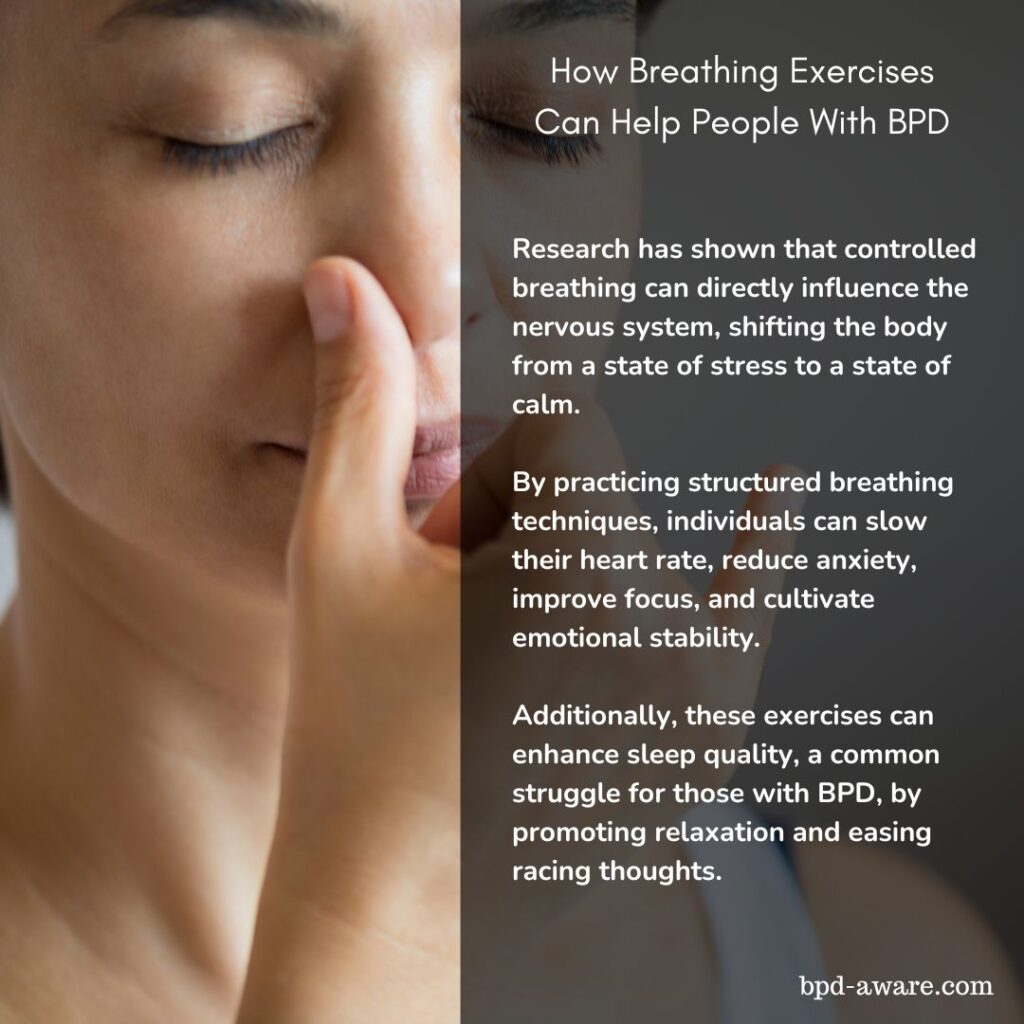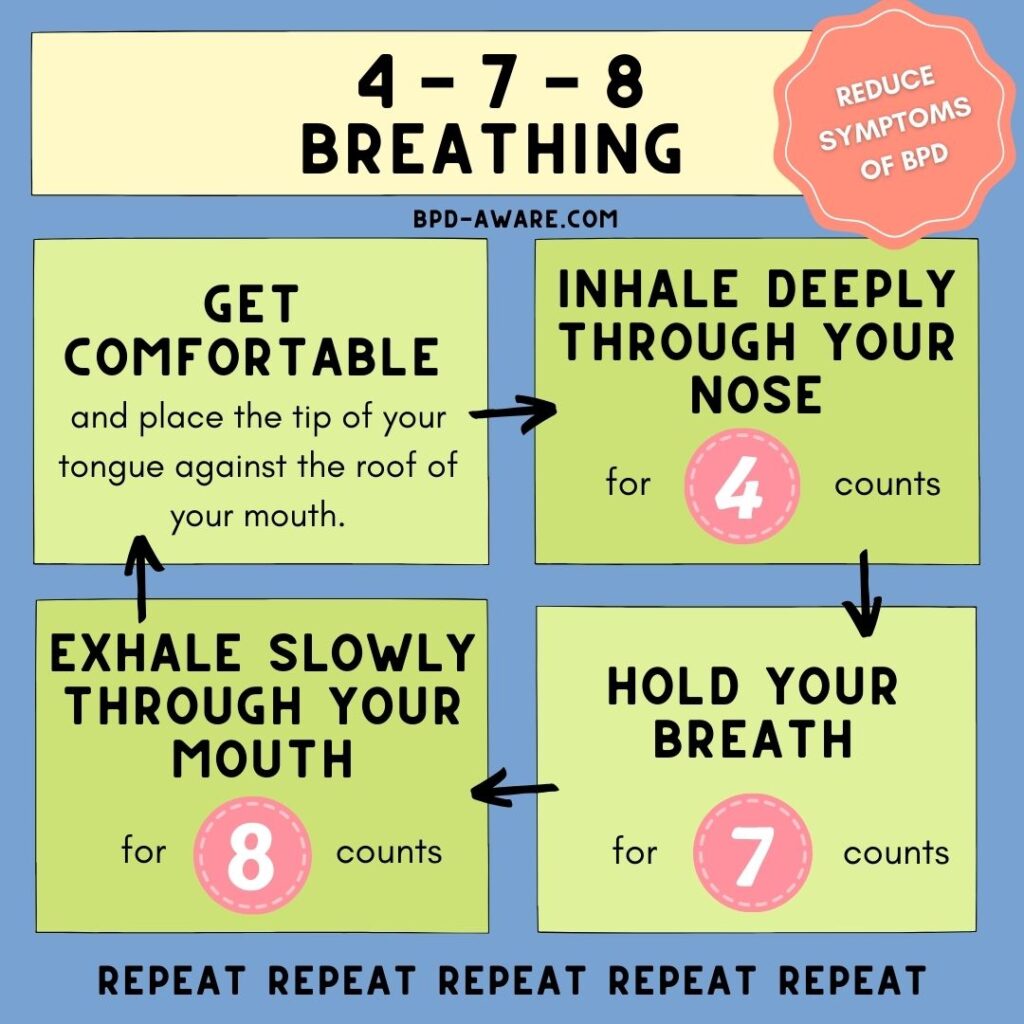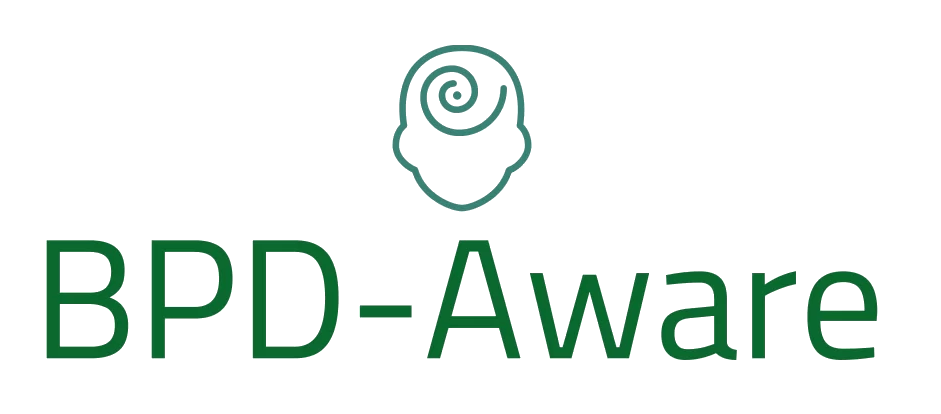Breathing exercises are one of the many tools available to people with borderline personality disorder (BPD) to help reduce their symptoms. Indeed, people have been using breathing exercises for thousands of years to help reduce stress and anxiety, aid sleep, and improve emotional balance.
Of course, thousands of years ago there was no real scientific research done on the benefits of breathing exercises (aka breathwork). However, millions of people enjoyed the benefits breathwork provided them and made it a part of their daily lives. Now, science has caught up to what people have been saying for years and found time and time again that breathing exercises offer an overwhelmingly positive experience.
Not only are breathing exercises deeply beneficial, they’re easy to learn, can be performed almost anywhere, and are absolutely free.
I’ve used breathing exercises myself for many years, even before I was diagnosed with borderline personality disorder. I’ve always found that they’ve enhanced my life and brought me more inner peace. Looking back at the more turbulent times in my life, I can certainly note a lack of self-care on my part – not eating a balanced diet, not getting enough quality sleep, and not taking the time to meditate or perform breathwork regularly.
In this article, I will share my favorite breathing exercises that have helped me with BPD over the years. I recommend giving each technique a few tries and finding the exercises that work best for you.

Box Breathing (For Emotional Regulation and Sleep)
Box breathing is perhaps the best-known breathing exercise and one of the easiest to learn. This breathing exercise helps slow down the nervous system, promoting stability during times of emotional distress. Box breathing also works well as a sleep aid as it gives your mind something to focus on while reducing anxiety.
How to perform box breathing:
- Breathe in through your nose for 4 seconds.
- Hold your breath for 4 seconds.
- Breathe out through your mouth for 4 seconds.
- Hold your breath for 4 seconds.
- Repeat for as long as necessary.
4-7-8 Breathing (For Sleep & Relaxation)
4-7-8 breathing is similar to box breathing but involves a slightly different rhythm of breathing. The different rhythms can be somewhat harder to remember, but with a little practice will soon become second nature.
Like box breathing, 4-7-8 breathing is great for calming the nervous system, especially during high-stress moments.
How to perform 4-7-8 breathing:
- Inhale deeply through your nose for 4 seconds.
- Hold your breath for 7 seconds.
- Exhale slowly through your mouth for 8 seconds.
- Repeat 4-5 times.

Resonant Breathing (For Mood Stabilization and Emotional Regulation)
Resonant breathing helps to calm the nervous system and also improves heart rate variability. Heart rate variability is the measure of time between consecutive heartbeats and reflects the body’s ability to adapt to changes in stress levels. A low HRV indicates the body is in fight or flight mode, a mode that people with BPD are stuck in much of the time.
It’s similar to box breathing and 4-7-8 breathing, only you don’t hold your breath between inhaling and exercising. The aim is to create a slow cycle of constant breathwork.
How to perform resonant breathing:
- Inhale for 5 seconds.
- Exhale for 5 seconds.
- Repeat for at least 5 minutes.
Humming Bee Breathing (To Reduce Frustration and Tension)
Ever felt the need to release your inner bee? Well, now you can thanks to humming bee breathing! Humming bee breathing can help to reduce mental frustration as well as physical tension around the face. As the name suggests, you will be making a noise like a buzzing bee. Dressing up in a bee onesie is not required but live your life.
The one drawback of this technique is that it’s difficult to do in a public situation which is why I save it for when I’m at home.
How to perform humming bee breathing:
- Inhale slowly and deeply.
- Exhale while making a gentle buzzing noise.
- Focus on the vibrations you can feel in your head and face.
- Repeat this pattern 5-10 times.
Diaphragmatic Breathing (For General Emotional Balance)
Also called belly breathing, this activates the parasympathetic nervous system to reduce stress and improves the body’s ability to take in oxygen. This can be particularly useful if you have respiratory issues or perform a lot of cardio exercise. Diaphragmatic breathing is something that’s helped me breathe better when running.
How to perform diaphragmatic breathing:
- Place one hand on your belly and one on your chest.
- Inhale deeply through your nose, making sure your belly expands (not your chest).
- Exhale slowly through your mouth, feeling your belly fall.
- Continue for 5-10 minutes.
Straw Breathing (For Panic & Overwhelming Emotions)
Straw breathing mimics the effects of pursed-lip breathing and can be used to slow down hyperventilation. Hyperventilation is a condition where someone breathes deeply and rapidly, causing carbon dioxide levels to rise in their blood; it’s a common symptom of both anxiety and panic attacks.
How to perform straw breathing:
- Purse your lips as if you’re blowing through a straw.
- Inhale deeply through your nose.
- Slowly exhale through pursed lips, taking twice as long as your inhale.
- Repeat until you feel calm.
Final Thoughts
Breathing exercises are a quick, effective way to feel calm, relaxed, and more in control of your emotions. That’s exactly why they can be so useful for people with BPD.
You don’t have to use every technique listed above daily but do try each of them and discover which works best for you. Practice the ones that work for you regularly, even when you’re feeling well so that they’re second nature to you when you really need them.
I’d love to hear which of the breathing exercises you enjoy the most and whether you have any not listed that have also proved helpful to you. Please leave me a message in the comment box below.
Sources, Resources, and Further Reading
- Effect of breathwork on stress and mental health: https://www.nature.com/articles/s41598-022-27247-y
- 3 breathing exercises to relieve stress: https://www.bhf.org.uk/informationsupport/heart-matters-magazine/wellbeing/breathing-exercises
- The 8 Best Breathing Techniques for Sleep: https://www.healthline.com/health/breathing-exercises-for-sleep
- Qigong Breathing Exercises for Sleep and Relaxation: https://www.youtube.com/watch?v=gJH-E0IjNII
















